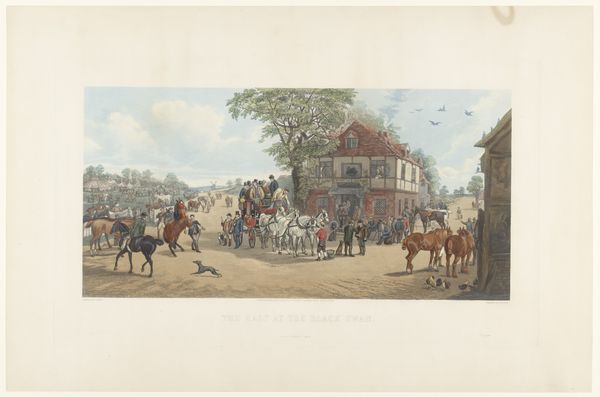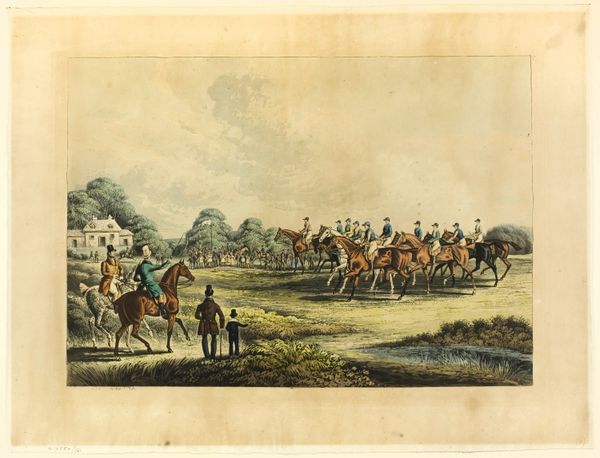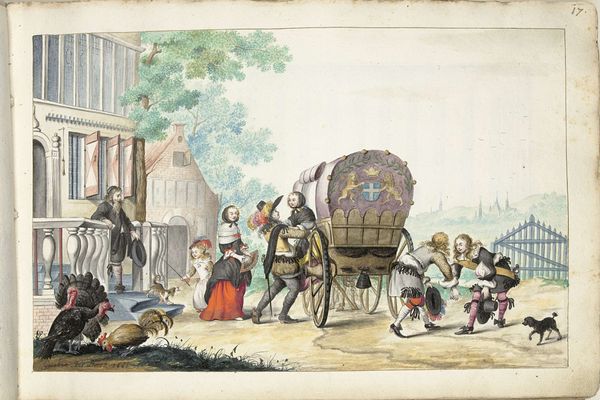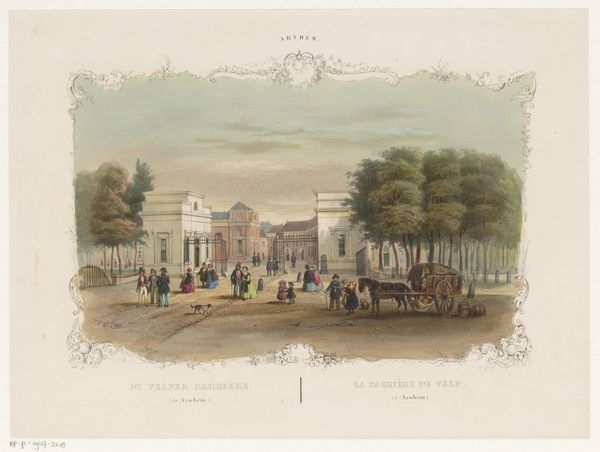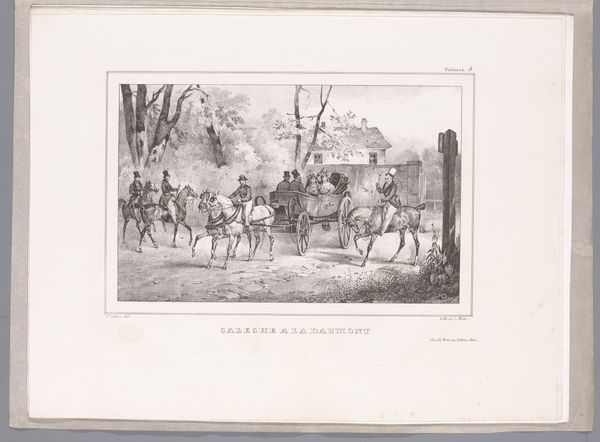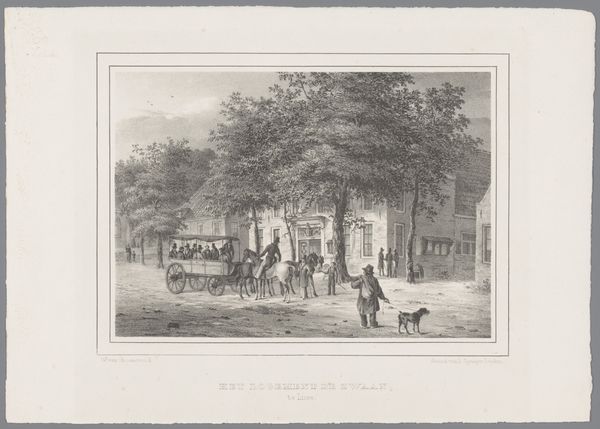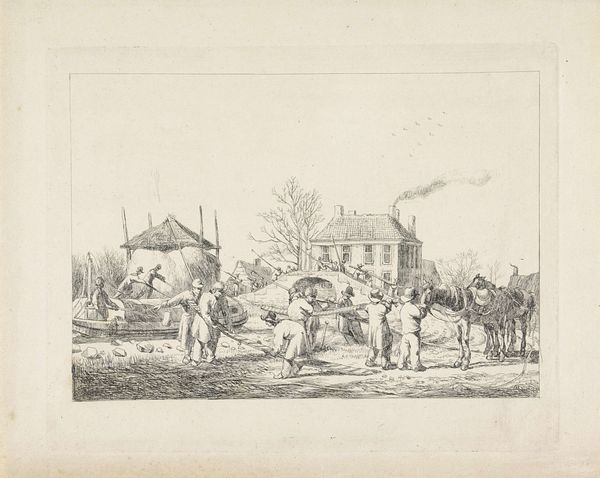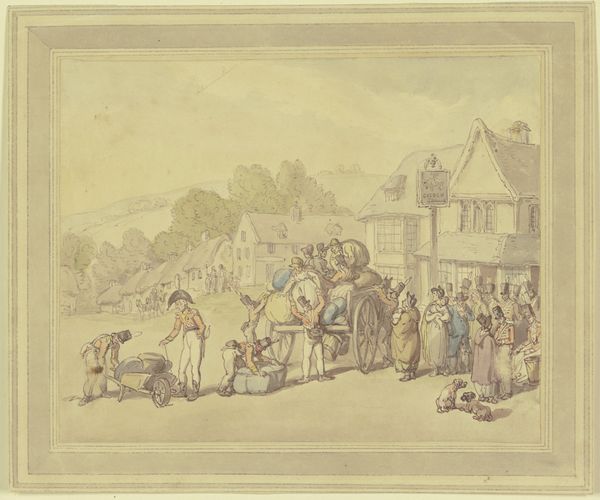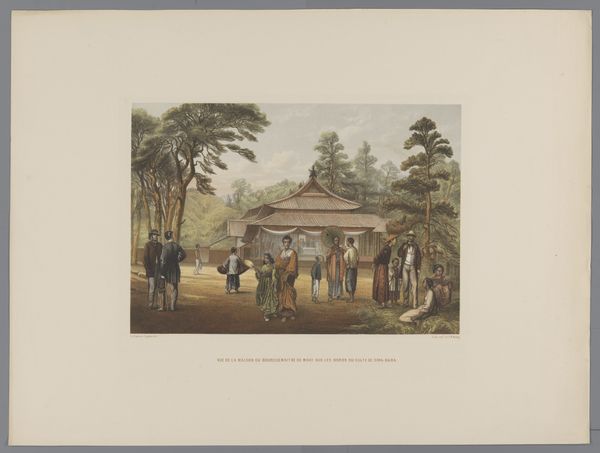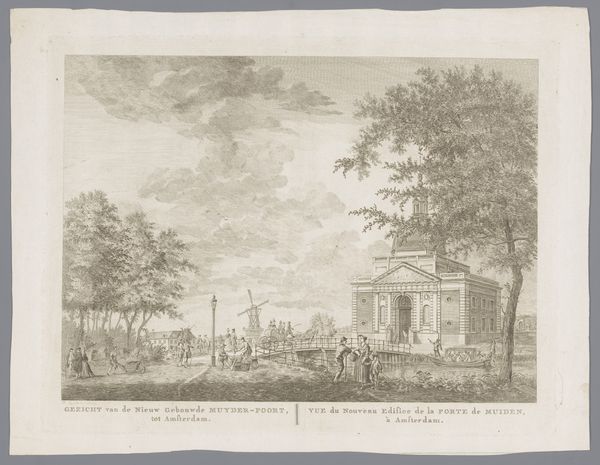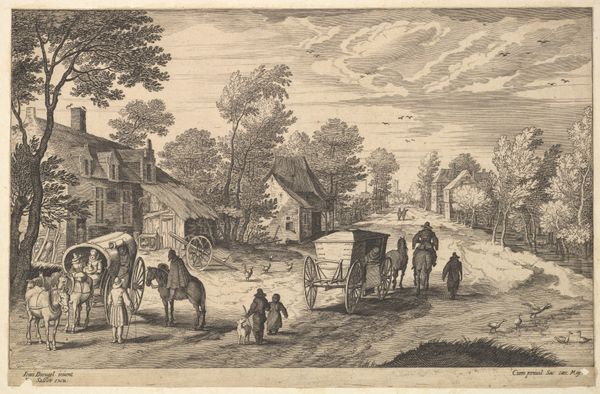
Dimensions: height 402 mm, width 683 mm
Copyright: Rijks Museum: Open Domain
Editor: So, here we have "Mensen en paarden in een dorpsstraat" - that translates to "People and Horses in a Village Street," likely made between 1882 and 1885 by C.R. Stock. It looks like a watercolor painting, and I’m struck by the everyday scene it captures. How do you interpret this work? Curator: It's a charming snapshot of 19th-century life, isn’t it? These genre paintings, which aimed to depict scenes of daily existence, really gained traction with the rise of the middle class. What details draw your eye and hint at societal structure? Editor: I notice the stagecoach as the focal point and that there are two sets of horses in the painting. Curator: Exactly. The changing of horses implies travel and connection, right? Stagecoaches facilitated trade, communication, and even cultural exchange across geographical spaces. Notice who is tending to the horses versus inside the coach, do you see any sort of power dynamics in this distribution of labour? Editor: Well, those tending to the horses seem to be from the working class, and those within the coach are…passengers, presumably wealthier. It’s a clear class division. Curator: Precisely! Also, think about how the image circulates and how people engaged with images of modern life as national identity. What might its presence in homes or public spaces communicate? Editor: It probably presented an idealized version of village life. But, also showed a reliance on a rigid class structure? Something quaint and perhaps worth preserving. Curator: And it reminds us to always consider the social and economic contexts in which art is made and received. Editor: I hadn’t really thought about it in terms of class structures being reproduced visually like that. It's like a microcosm of society presented for viewing. Curator: Indeed. Hopefully, this piece encouraged everyone to look closer at the society mirrored within art.
Comments
No comments
Be the first to comment and join the conversation on the ultimate creative platform.
